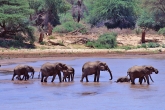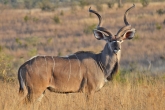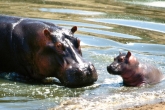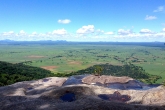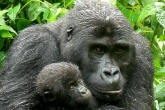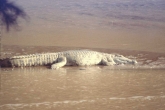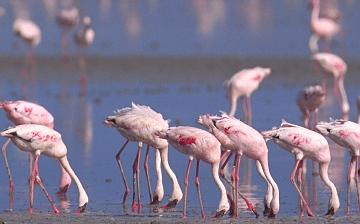Lake Natron Tanzania 585
This spectacular area sits just north east of the Ngorongoro Crater and forms part of Africa's immense Great Rift Valley. Nestled between rolling volcanic hills and deep craters, Lake Natron sits at the lowest point of the rift valley - 600m above sea level - and is probably the world's most caustic body of water.
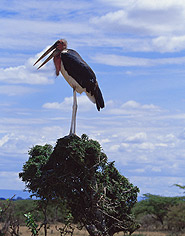
Marabou Stock
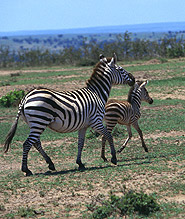
Zebras
The drive to Lake Natron takes around three hours from Mto wa Mbu (beside Lake Manyara). It is hot but with the Rift Valley rising up on your left hand side, the landscape is increasingly dramatic. You will soon focus on the scenery: looking around, the views are spectacular. Drive deeper, and green vegetation gives way to a sparse, dusty landscape. Only the occasional Maasai homestead now dots the landscape.
To the north of this track stands a handful of great mounds the remains of extinct volcanoes. These are soon dwarfed by the sight of Kerimasi Crater and, finally, the active Oldoinyo Lengai whose name means ?mountain of god? in the Maasai language. To finally reach Lake Natron, you drive around this imposing volcano ? perhaps keeping your eyes on its smoking crown.
It's about a five-hour drive from Lake Natron to reach the safari camps of the Serengeti's Loliondo area.
Wildlife of Lake Natron
The area around Lake Natron is home to some wildlife, you might see the occasional giraffe or zebra ? but this is not the main reason to come here. In stead, visit this area for its remoteness, scenery and for an interesting route into the back of Loliondo.
That said, the lake itself is home to a fascinating eco-system which thrives in this harsh environment. The lake is full of millions of Cyanobacteria - a salt loving micro organism which create their own food through photosynthesis. As the lake increases in salinity, so does the population of bacteria. The lake also supports a vast population of Spirulina, a blue-green algae with red pigments, on which the large population of Lesser Flamingoes feed on.
The lake is an extremely hostile environment and most other organisms are not able to live here. The alkalinity levels of the lake can become so concentrated, that they almost approach that of straight ammonia. Few predators can survive here, and the result is a safe breeding ground for the flamingos who return here annually to nest.
Safaris
6 Days Safari to Amboseli, Lake nakury and Maasai Mara Reserves
5 Days - Manyara, Ngorongoro and Serengeti National Park
12 Days Mountain Gorrilas Trakings
10 Days Kenya, Sambura, Mt. Kenya, Lake Nakuru, Masaai Mara and Amboseli
7 Days Lake Manyara, Ngorongoro and Serengeti
3 Days Mountain Gorilla Safari
4 Days Masaai Mara and Lake Nakuru Safari
14 Days Tanzania Classic Safari
1 - 4 Days Short Safaris
12 Days Kenya Tanzania Extended Safari

 German
German Spanish
Spanish







